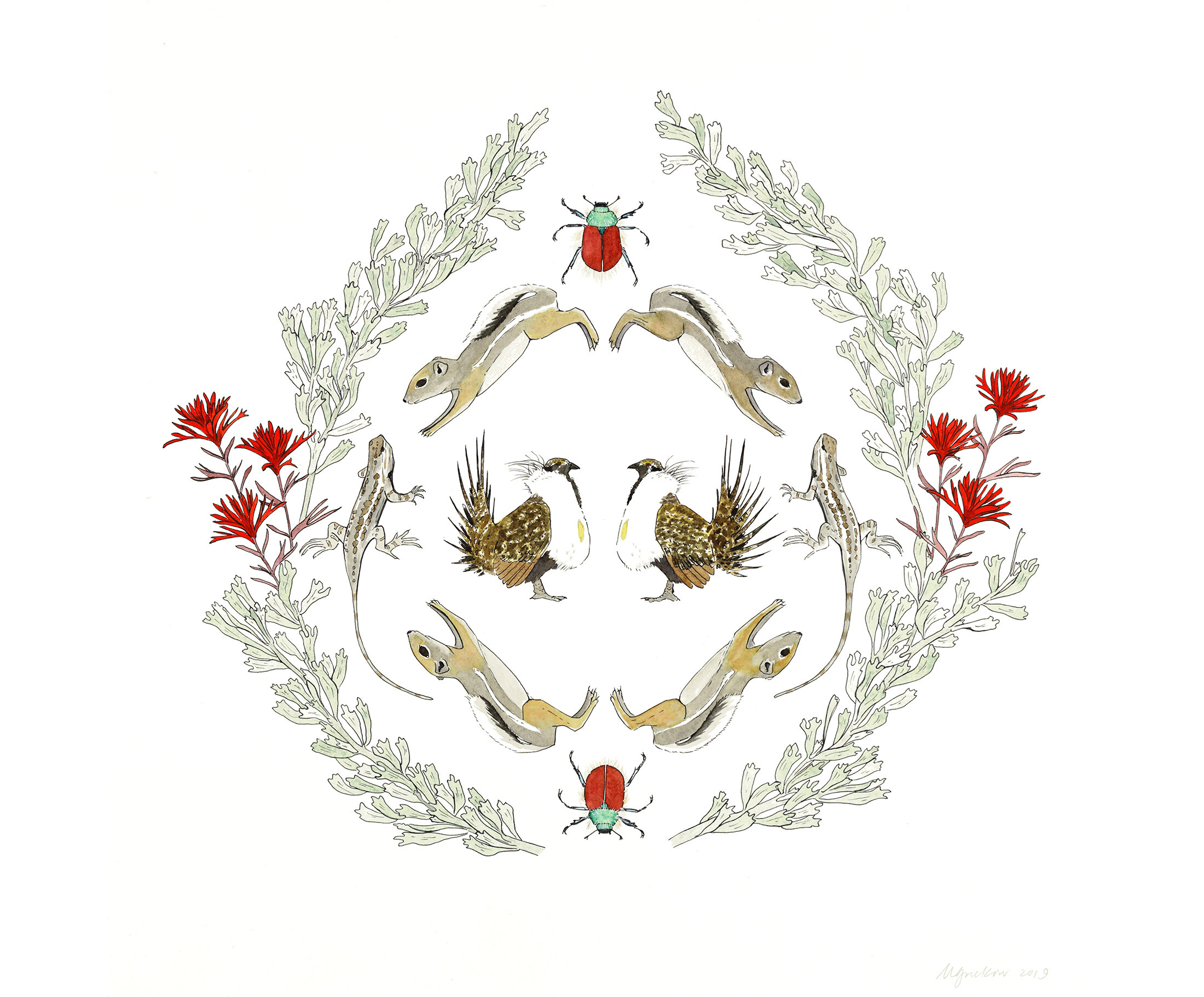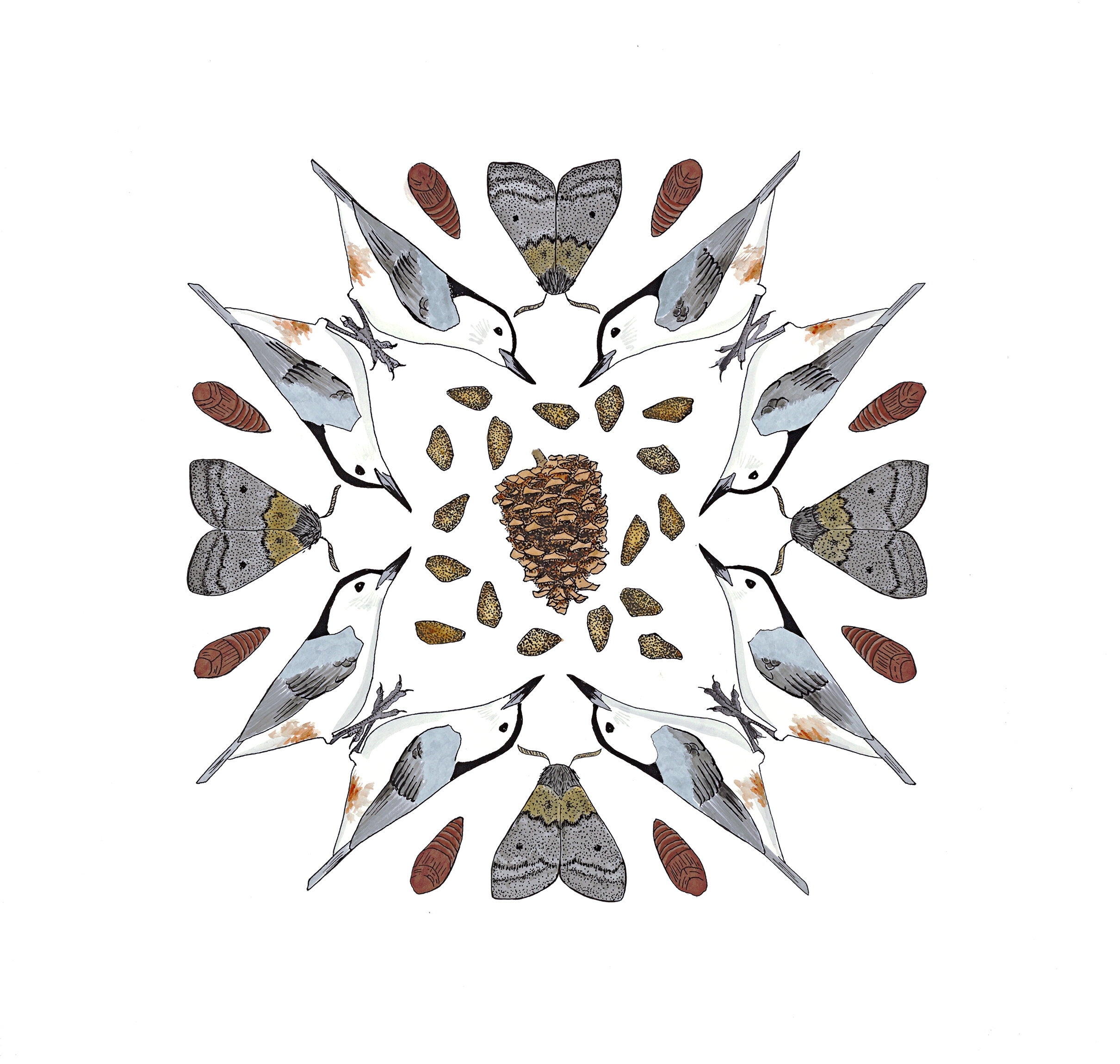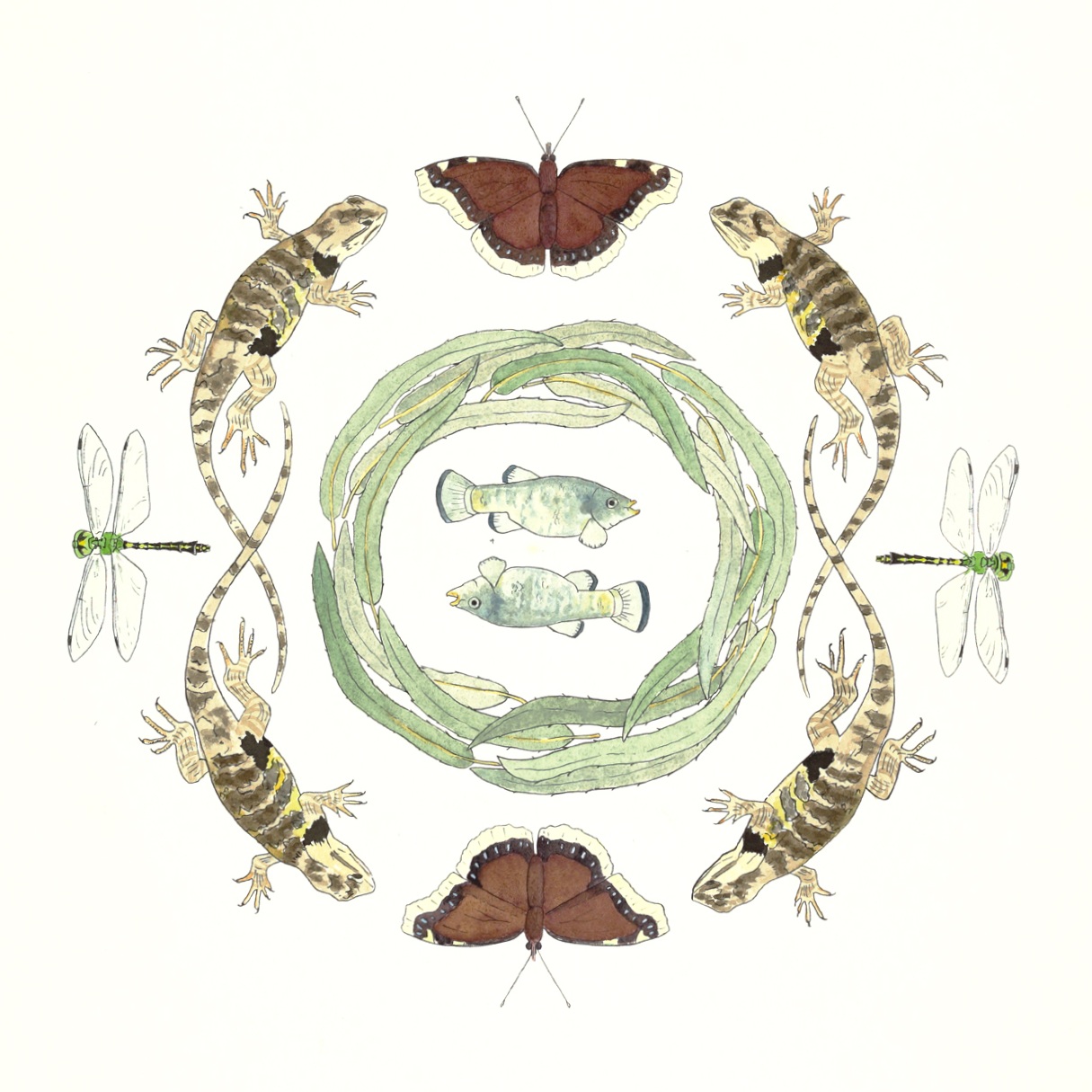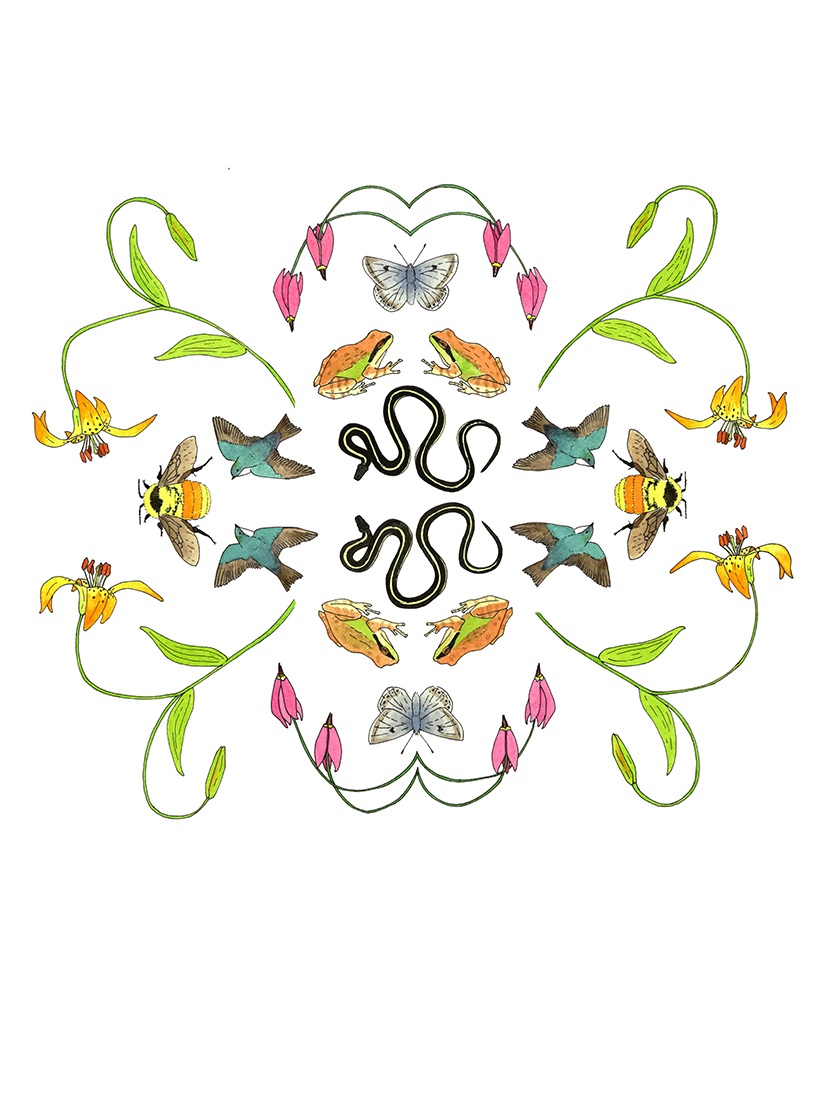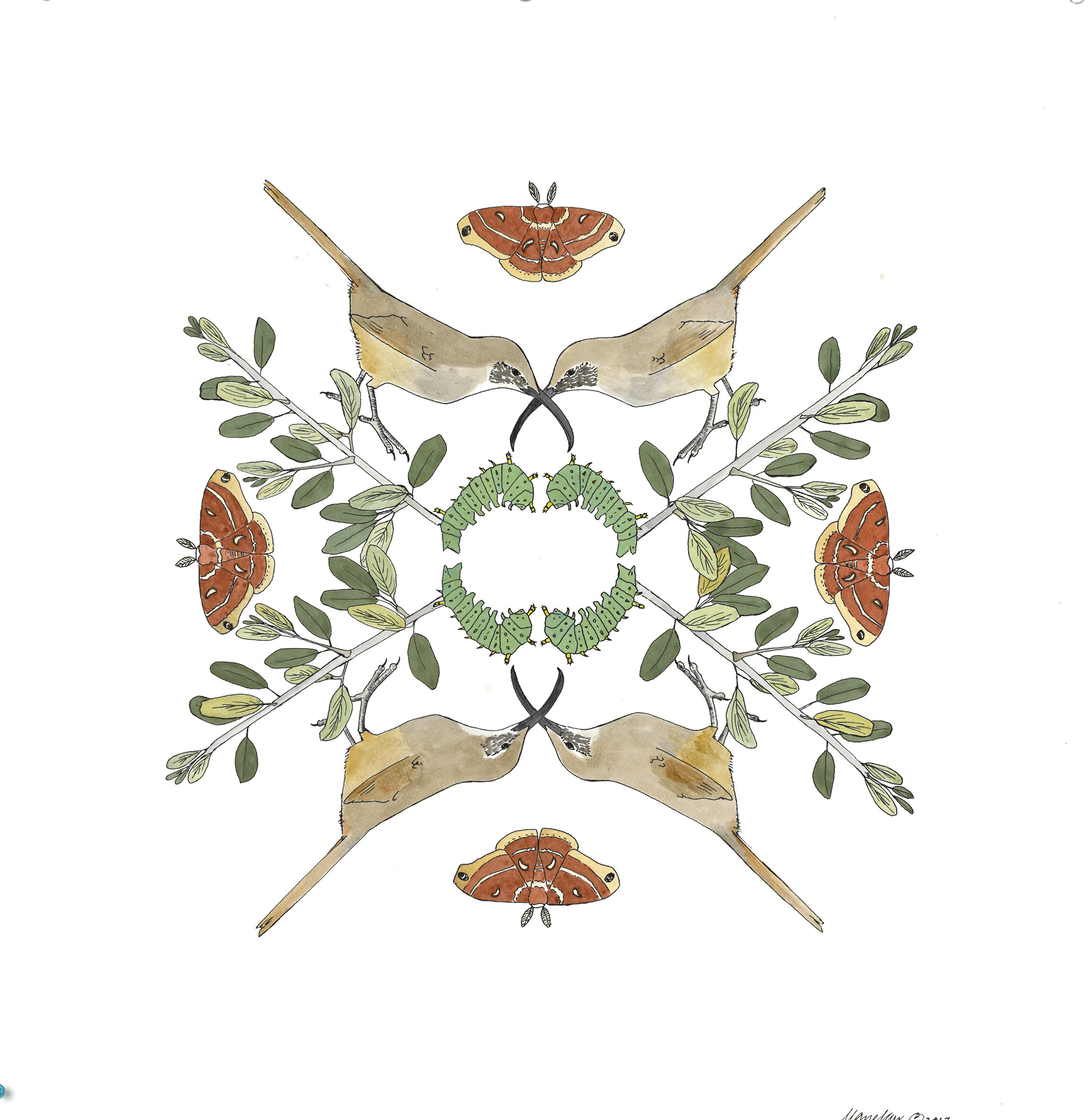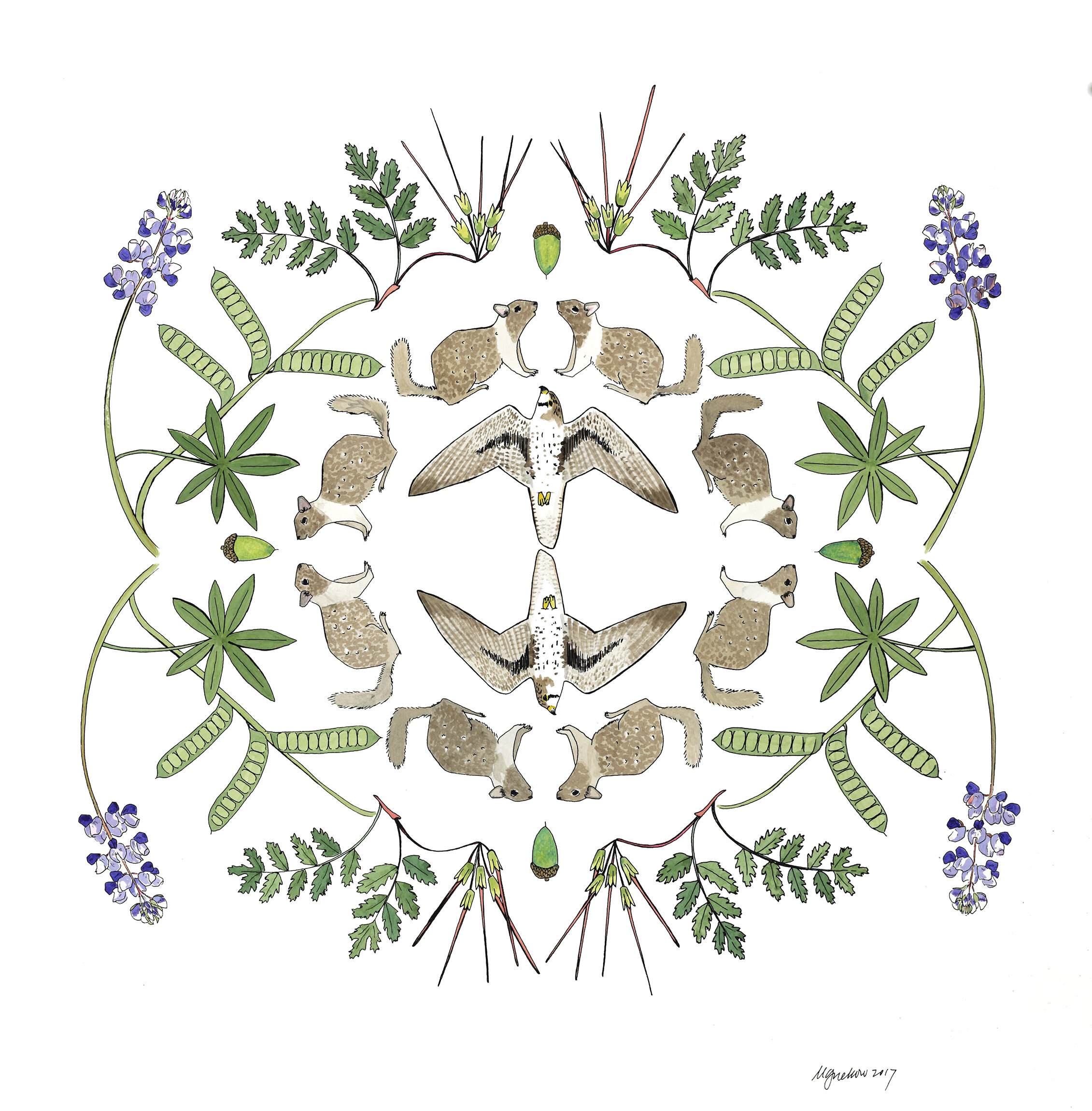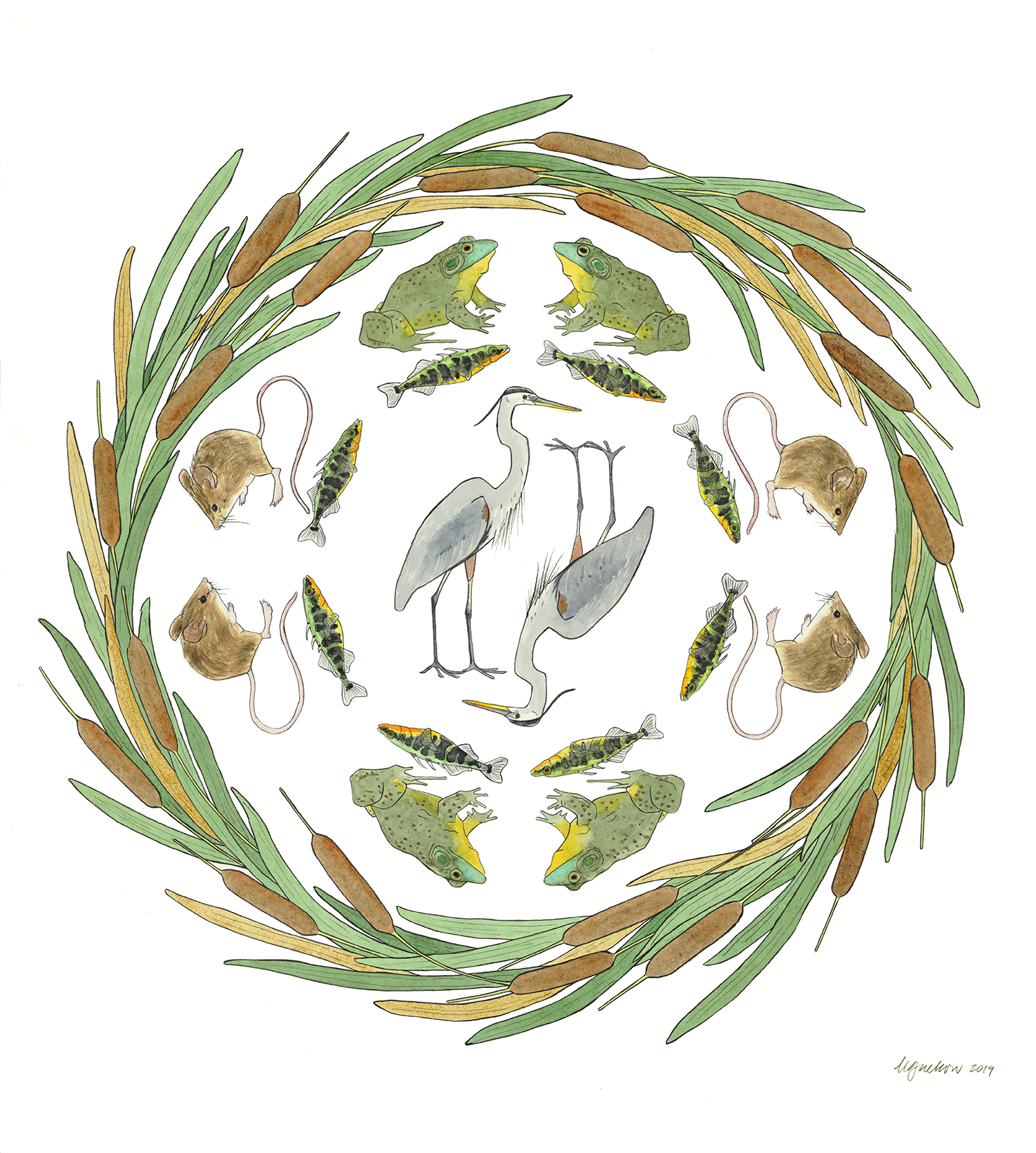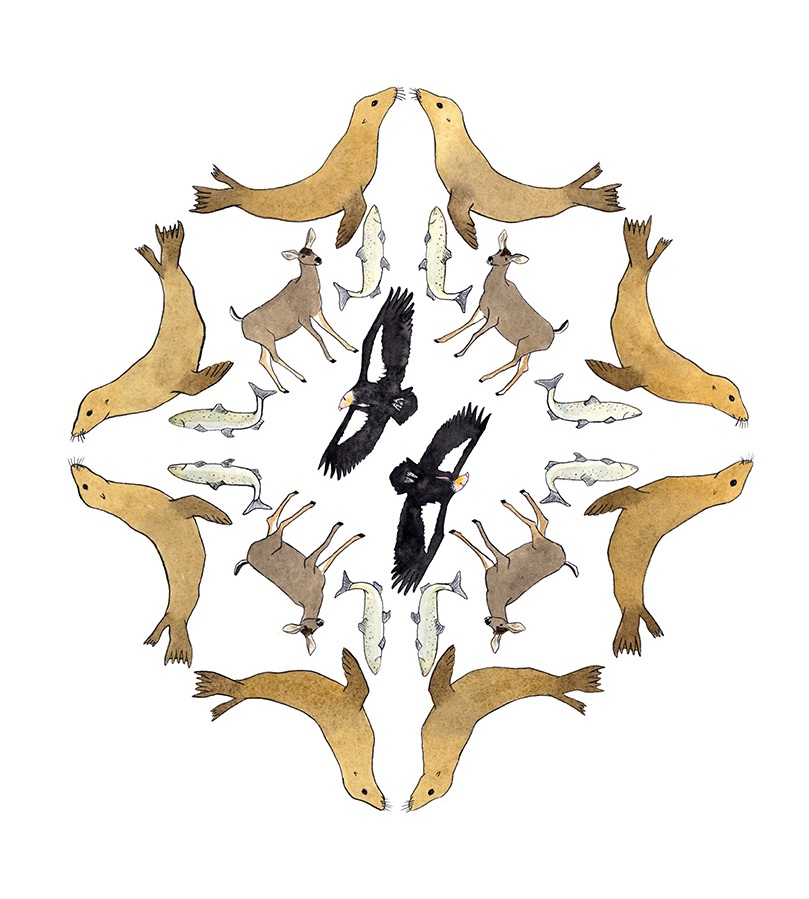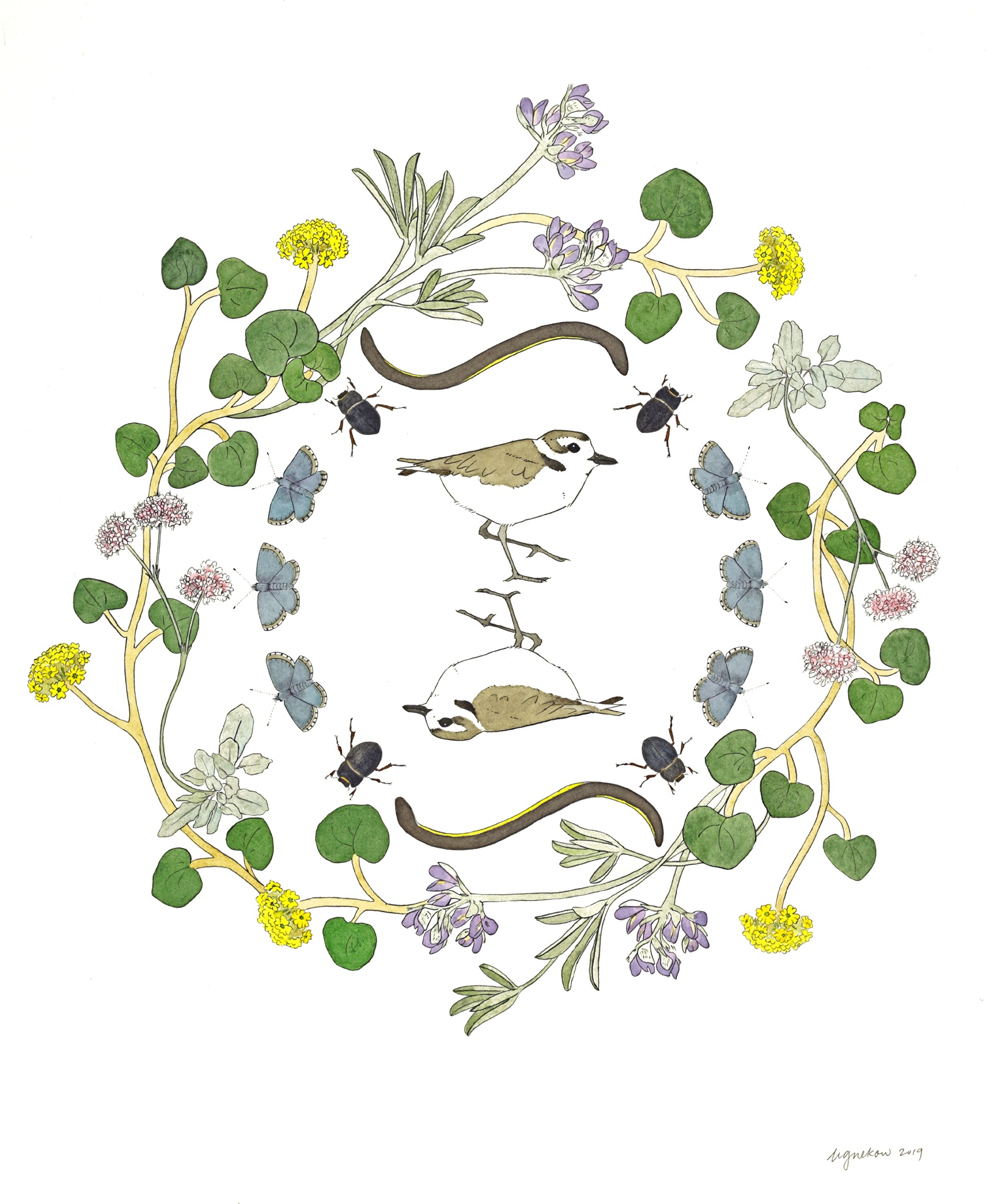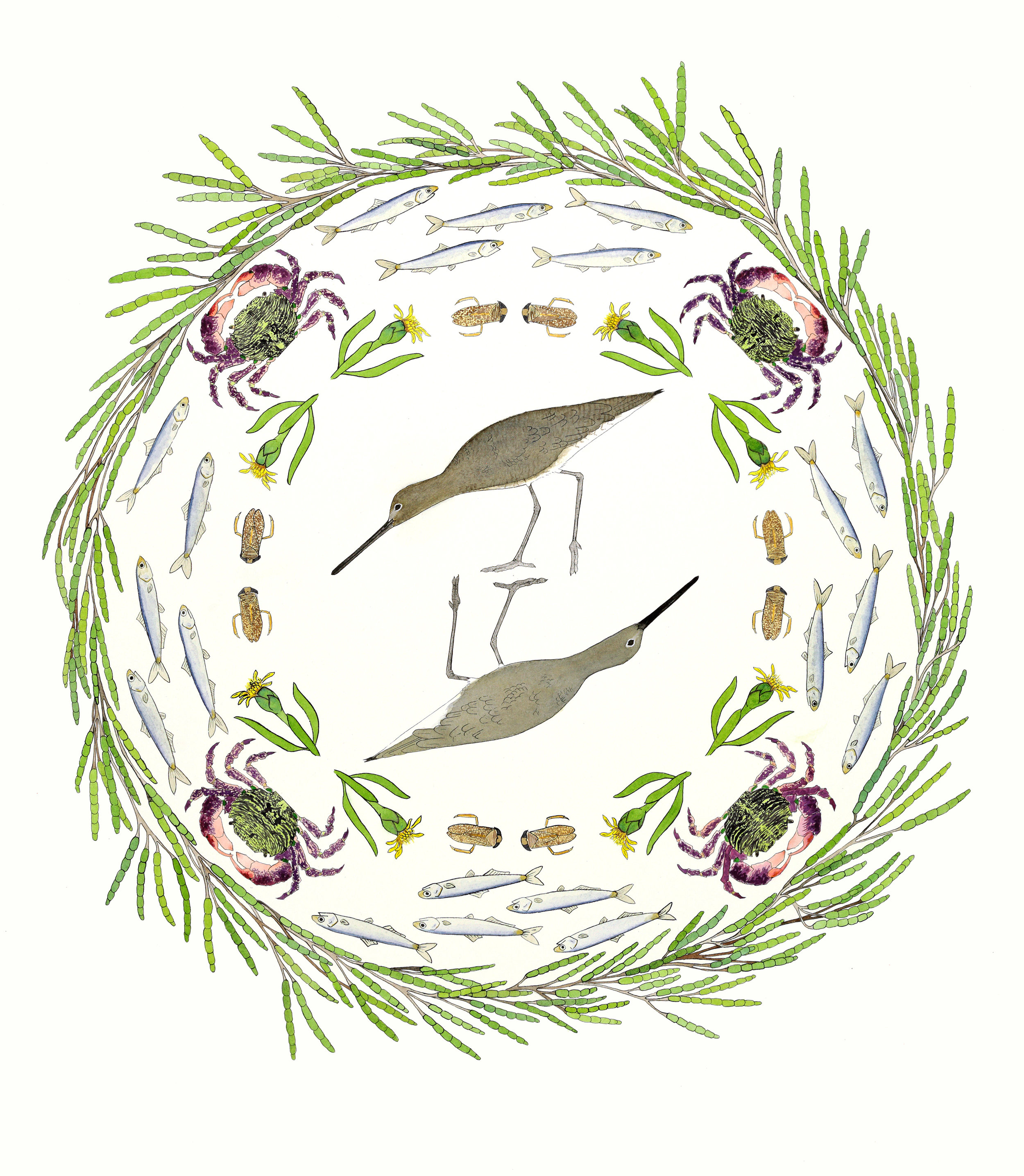Ecological Relationships
Spotted Owls among the Firs
Throughout the mature conifer forests of North America, Northern Spotted Owls have been impacted by both deforestation and the arrival of Barred Owls (Strix varia) across their range. However, in Marin County, the Spotted Owls remain relatively stable to date, likely due to large areas of protected habitat throughout the county, and low numbers of Barred Owls.
This piece was created after an artist-in-residence at Point Blue Conservation Science’s Palomarin Field Station in West Marin County. Through art and science collaboration, 7 Ravens Studio and Point Blue hope to engage more people in conservation action.
This piece was created after an artist-in-residence at Point Blue Conservation Science’s Palomarin Field Station in West Marin County. Through art and science collaboration, 7 Ravens Studio and Point Blue hope to engage more people in conservation action.

Garter Snake among the Brambles
San Francisco Garter Snakes (Thamnophis sirtalis tetrataenia) and California Red-legged Frogs(Rana draytonii) are two endangered species that call the Bay Area home. Both tied to freshwater, they are most impacted by the decline of suitable habitat in a heavily developed region. Still, they manage to hold on in pockets of habitat strewn across a landscape populated with more familiar species like Poison Oak (Toxicodendron diversilobum), California Blackberry (Rubus ursinus), Barn Swallows (Hirundo rustica), California Darner dragonflies (Rhionaeschna californica), and mayflies (Baetis sp.).

Oystercatchers in the Tidepools
In some places, the rock surfaces around tidepools look black from a distance. Look closer and you will see that the black is actually the deep indigo of California Mussel colonies or a dense coat of marine algae that are actually green, purple, red, gold, or brown. Every pool teems with life - including small molluscs we know as Purple Olivella and wildly colored Anenomes (here A. sola). The piercing calls of Black Oystercatchers can be heard over the crashing waves and their orange bills and yellow eyes set against nearly black plumage are a striking sight as they hunt for food among the rocks.

Orcas near the Farallones
White Sharks (Carcharodon carcharias) and Orcas (Orcinus orca) both occupy a position as apex predators in their ocean habitat. When sharks move out of an area to avoid orcas, that impacts the prey the both hunt - here, Northern Elephant Seals (Mirounga angustirostris). The prescence or absence of apex predators also impacts the foraging strategies, which are different for male and female Elephant Seals. Where males forage near the sea floor along the continental shelf, relying on species like Silvergray Rockfish (Sebastes brevispinis) and Pacific Hake (Merluccius productus), females forage in the open ocean, relying on species like Humboldt Squid (Dosidicus gigas). Small, bioluminescent Blue Lanternfish (Tarletonbeania crenularis) are prey for many species, including both squid and seals, as they migrate vertically in the water column.

Whipsnakes among the Fairy Lanterns
In the oak woodlands of Mount Diablo, Feralia februalis caterpillars munch on Blue Oak (Quercus douglasii) leaves while an Oak Titmouse (Baeolophus inornatus) chatters noisily nearby. Rocky outcrops provide habitat for Western Fence Lizards (Sceloporus occidentalis), commonly known as "blue-bellies" for their turquoise and indigo undersides. The stealthy and lightning-fast Alameda Whipsnake (Masticophis lateralis euryxanthus) may make a quick meal of a basking lizard. In cooler, shadier places, the plant community shifts to include a variety of moisture-loving plants. Here an astute observer may be rewarded with a glimpse of the Mount Diablo Fairy Lantern (Calochortus pulchellus). This distinctive yellow-green lily with elegant 'wings' atop its drooping head is only found on the slopes of Mount Diablo and blooms for just a few weeks each year.









